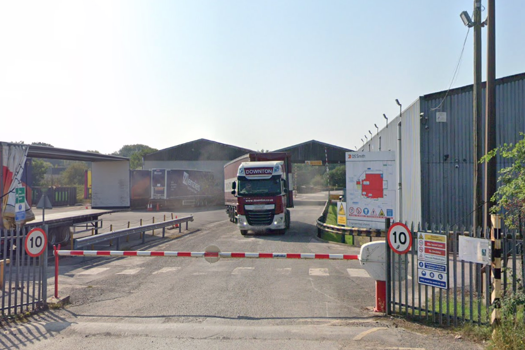Today the company has a respectable user base of around 600 active customers worldwide, in the English-speaking markets of the UK, US and Australasia, with offices in each region. “We have a wide range of customers – probably more weighted to the digital, litho and wide format sectors, but we do also have a lot of packaging and label customers too,” says Amanda Newman, head of marketing at Tharstern.
It’s based in Colne, in a building just off the end of the M65, which leads to the M6. “We moved there about eight years ago when we had our MBO,” says Newman. “They were custom built-offices and for the next few years, we worked really hard to create an engaging, fun environment for our staff there. Although around 40% of our staff are remotely based, the remaining 60%, about 35 people, worked from these offices until March 2020 when we all started working from home because of lockdowns. We have now evolved to a hybrid way of working, where some staff come into the office one or two days a week with their team, although this is decided on a team-by-team basis.”
Development is centralised in Colne, though the Australian distributor Mosaic operates independently and carries out its own implementation, marketing and support. The US office handles training and implementation. “Our developers do not tend to come from a print background – they tend to come from a more traditional development track,” says Newman. “But the majority of our product team, who decide on upcoming developments, do come from a print background.”
Programming in a coal shed
Like many other of today’s MIS companies, Tharstern grew out of the needs of a specific printing company. In the early 1980s Keith Harrison was working as a financial director for a print firm. One day, after noticing how consistently painful it was to work out quotes and re-quotes, he had a ‘lightbulb moment’. “Surely this inefficient method of estimating can be automated with one of those new-fangled computer thingies?” he thought. At the time he was still writing transactions down in a ledger book and didn’t really know a thing about new-fangled computer thingies. He persuaded his son-in-law to create a prototype estimating program on a Commodore PET computer, in BASIC.
Feedback from his estimating team was positive and Harrison decided there were commercial possibilities beyond the original print company. So he bought an off-the-shelf company called Tharstern to handle this, keeping the name because he was “too tight to pay the small fee required to change it”.
The Commodore PET wasn’t quite the thing for professionals, so Harrison employed “a YTS lad” to re-write the software for MS-DOS and the IBM PC. They worked from the back of a coal supplier’s shed, which they were allowed to use for free in return for collecting money from customers when they popped in for their coal.
By 1991, the two-man team had become six and occupied a 93sqm unit on Crownest Industrial estate in Barnoldswick. This had “breezeblock walls, bars on every window and a brewing-up table right next to the toilet,” says Newman, but “the team was on its way”. A key hire was Keith McMurtrie, who today is CEO.
In 1998 Harrison decided to retire. Determined not to sell Tharstern to a competitor, he handed it over to his other son-in-law Richard Bannister, owner of the Boundary Mill retail chain. The Tharstern team moved into new “swish facilities” at RB House.
After 15 years Bannister decided to concentrate on his core retail business and looked at selling Tharstern in 2013. After hearing that a competitor was interested, the management team decided to make a bid themselves. With backing from private equity house Mobeus Equity Partners, CEO Keith McMurtrie together with CTO Antony Lord and CRO Lee Ward acquired Tharstern as a management buyout.
Free to make more decisions, the team worked with Mobeus to create a three-year plan for significant growth. In 2015 Tharstern introduced a major rebrand of its visual identity and logo and successfully launched the MIS in the US.
Technical progress
As time went by Tharstern progressed its software from MS-DOS to native 16-bit Windows, then 32-bit Windows, and then to an SQL platform that allowed customers to write their own reports. “This was a real turning point for the company and after this, developments came thick and fast,” says Newman.
Today, the MIS is offered as SaaS, hosted remotely in the cloud and customers pay monthly. However, some customers still run their MIS locally. All systems can have remote access for sales staff, or from the shop floor, warehouse and warehouse, with mobile phone support including barcode scanning for jobs and inventories.
McMurtrie saw the potential of the JDF protocol for the industry early on, so took the decision to join CIP4 and be one of the first implementers of JDF.
Cloud for Labels
Although Tharstern’s system grew and took on ever more functions and modularity over the years, it remained essentially one, highly adaptable product that supports all the different print disciplines. This year, it has changed, with a new major product introduction.
“A few years ago, we took the decision to launch a new product for the label sector, Tharstern Cloud for Labels,” Newman says. “We did this because we knew there was additional functionality that our label customers wanted. But, instead of adding this quite niche functionality into our existing MIS, we saw an opportunity to create a cloud-based platform for the future of the Tharstern MIS for all sectors.”
Tharstern Cloud for Labels was announced last year for beta users and will be launched commercially in Q2 this year. “It has been built with an API-first approach, so our customers will be able to connect, communicate, drive and interact with any other product they want, whatever development language that product uses.
“We have seen our customers diversify into producing other types of products, and so we knew that the MIS software solutions of the future needed to be completely agnostic to the type of printed product that is being created. We achieved this to an incredible level with the Tharstern MIS, but Tharstern Cloud for Labels takes this further – the brains of the system see no difference between a roll of labels and a perfect-bound brochure, between a large signage job, a flexible pouch and a carton package.”
Also new are built-in employee engagement tools, she says. Printing companies can measure employee satisfaction and happiness through regular surveys.
Eventually the Cloud functions will be extended to cover other print sectors, says Newman, although the sheer number of features of the original MIS would take time to transfer. There are still two development teams for the main MIS and the new Labels product. “We do not see Tharstern Cloud for Labels replacing our existing MIS product in the near future and not for a very long time,” Newsman says.
Smart factories and business intelligence
Today’s MIS is potentially the heart of a ‘smart factory’, with links to just about everything. “This has been happening for many years, and our customers absolutely see their MIS as the heart of their workflow, controlling automation, integration and communication with other software and production equipment,” says Newman.
How about artificial intelligence for scheduling and the like? Is this just a buzzword for lots of pre-sets? “The term ‘artificial intelligence’ is not technically correct for this sort of scenario,” Newman says. “What we’re talking about here is ‘business intelligence’. And this is definitely not just a buzzword. Printers should be aiming to become data-led businesses that really make use of the information that’s stored in their software.
“We’re starting to see this happening already with an increasing interest among our own customers in using the Microsoft Power BI application, which is a very powerful business intelligence platform. They’re using it to capture their customers’ interaction with their business, for example, and seeing where the perceived value is in their products and then using that insight to form sales and pricing policies.
“So it’s not just about understanding print, it’s about understanding the whole business and how it fits in the printing industry. From a technological point of view, this is certainly where the future lies.”
Future projects
What’s next for Tharstern? “Sustainability and traceability are two recent areas of focus for us,” says Newman. “We’ve recently launched traceability features that will allow our customers to target more pharma and food companies, by giving them the ability to create a chain of custody tracking record for each job, making them compliant with traceability requirements for this industry.
“We’re also currently working on integrations with sustainability partners such as Carbon Quota, to help printing companies calculate the carbon footprint of a job, for large organisations that are starting to demand this more and more.”
STAR PRODUCT
“We have included our big sellers in our standard and premium subscription packages,” says Newman. “The add-on tools we offer in addition to these packages tend to be more niche.”










